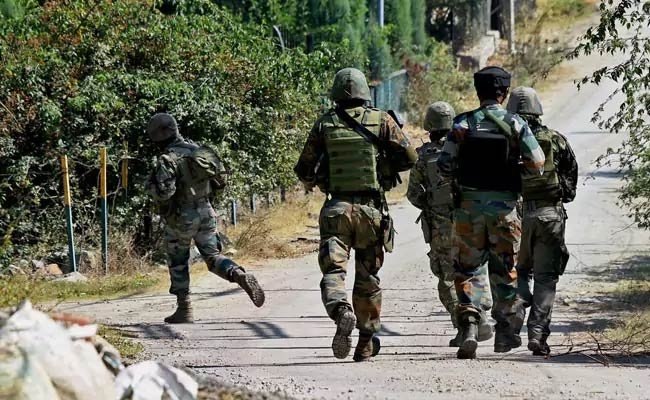Security forces across Jammu and Kashmir mobilize extra units following intense combat operations. The anti-terror operation enters its second phase with specialized teams arriving at strategic locations. Local residents remain under safety protocols while military units coordinate complex tactical maneuvers.
Breaking Down the Current Security Situation
The ongoing Kulgam encounter represents one of several recent operations targeting militant groups across Kashmir valley. Intelligence reports suggest multiple terrorists remain holed up in dense forest areas surrounding the encounter zone. Security personnel have established tight perimeters to prevent any escape attempts during darkness hours.
Additional reinforcements include elite commandos trained specifically for such challenging terrain operations. These specialized units bring advanced equipment and tactical expertise essential for successful mission completion. Helicopter surveillance provides crucial aerial support for ground forces operating in difficult mountainous conditions.
Local police forces work closely with central paramilitary units to ensure comprehensive coverage of all potential routes. The coordination between different security agencies demonstrates improved operational efficiency compared to previous similar encounters. Communication systems remain fully operational despite challenging weather conditions affecting the region.
Strategic Importance of the Operation Location
The encounter site holds significant strategic value due to its proximity to major infiltration routes along borders. Historical patterns show this area frequently serves as a transit point for militants entering Indian territory. Dense vegetation and rugged terrain provide natural cover that terrorists often exploit for movement.
Geographic advantages favor security forces familiar with local topography and established operational protocols in place. Years of experience conducting similar operations in this region have refined tactical approaches significantly. Weather conditions currently support aerial reconnaissance missions essential for tracking terrorist movements effectively.
Civilian areas remain at safe distances from active combat zones, allowing security forces operational freedom. Evacuation procedures activated earlier ensure local populations avoid potential crossfire situations. Medical facilities stand ready to provide emergency treatment if circumstances require immediate intervention.
Enhanced Security Measures Across the Region
Following this encounter, security agencies have implemented heightened alert levels throughout J&K’s broader territorial jurisdiction. Checkpoints receive additional personnel to monitor suspicious activities and potential terrorist infiltration attempts. Border surveillance systems operate at maximum capacity with advanced detection equipment deployed strategically.
Intelligence networks across the valley share real-time information to prevent coordinated attacks during ongoing operations. Special task forces patrol vulnerable areas identified through comprehensive threat assessments conducted by security experts. Communication between military units and civilian administration ensures swift responses to emerging security challenges.
Key security enhancements include:
- Increased patrol frequency in sensitive border areas
- Advanced surveillance technology deployment at strategic points
- Enhanced coordination between different security force branches
- Rapid response teams positioned at crucial locations
These measures reflect lessons learned from previous encounters and evolving terrorist tactics observed recently. Security planners continuously adapt strategies based on intelligence inputs and operational experience gained through similar missions.
Impact on Local Communities and Daily Life
The Kulgam district experiences temporary disruptions to normal activities while security operations continue in nearby areas. Schools and businesses follow safety guidelines issued by local authorities to protect civilian populations. Transportation services operate on modified schedules to accommodate security convoy movements through affected zones.
Community leaders maintain regular contact with security officials to address concerns and coordinate necessary support services. Medical emergencies receive priority attention through established protocols ensuring healthcare access remains uninterrupted during operations. Essential supplies reach residential areas through carefully monitored distribution networks.
Local residents demonstrate remarkable resilience and cooperation with security forces conducting these vital operations. Their support proves invaluable for gathering intelligence and maintaining stability during challenging periods. Communication channels between communities and authorities function effectively to address immediate needs and concerns.
Operational Challenges and Tactical Considerations
Dense forest cover presents unique obstacles for security forces attempting to locate and neutralize hidden terrorists. Night vision equipment and thermal imaging devices help overcome visibility limitations during darkness hours. Specialized mountain warfare training enables personnel to navigate treacherous terrain safely while maintaining tactical advantages.
Weather patterns affect helicopter operations and aerial surveillance capabilities essential for successful mission coordination. Communication equipment must function reliably in mountainous terrain where signal interference often occurs. Supply lines require careful planning to ensure adequate ammunition and provisions reach forward operating positions.
Terrorist tactics continue evolving, requiring adaptive responses from security forces familiar with changing operational environments. Experience gained through previous encounters provides valuable insights for current tactical planning and execution strategies. Training programs continuously update techniques based on emerging threats and successful operational models.
Looking Ahead: Security Implications
The successful completion of this anti-terror operation will significantly impact regional security dynamics across Kashmir valley. Disrupting terrorist networks through targeted operations reduces their capacity to plan and execute attacks against civilians. Enhanced security measures implemented during this period may become permanent fixtures in high-risk areas.
Intelligence gathered during the encounter provides valuable information about terrorist supply lines and support networks. This data helps security agencies plan future operations and identify potential threats before they materialize. Regional stability depends on maintaining pressure against terrorist groups through consistent operational activities.
As operations continue, security forces remain committed to protecting civilian populations while eliminating threats to regional peace. The coordination between different agencies demonstrates improved capabilities for handling complex security challenges effectively. Success in Kulgam reinforces the importance of sustained anti-terrorism efforts across the entire region.








Be First to Comment